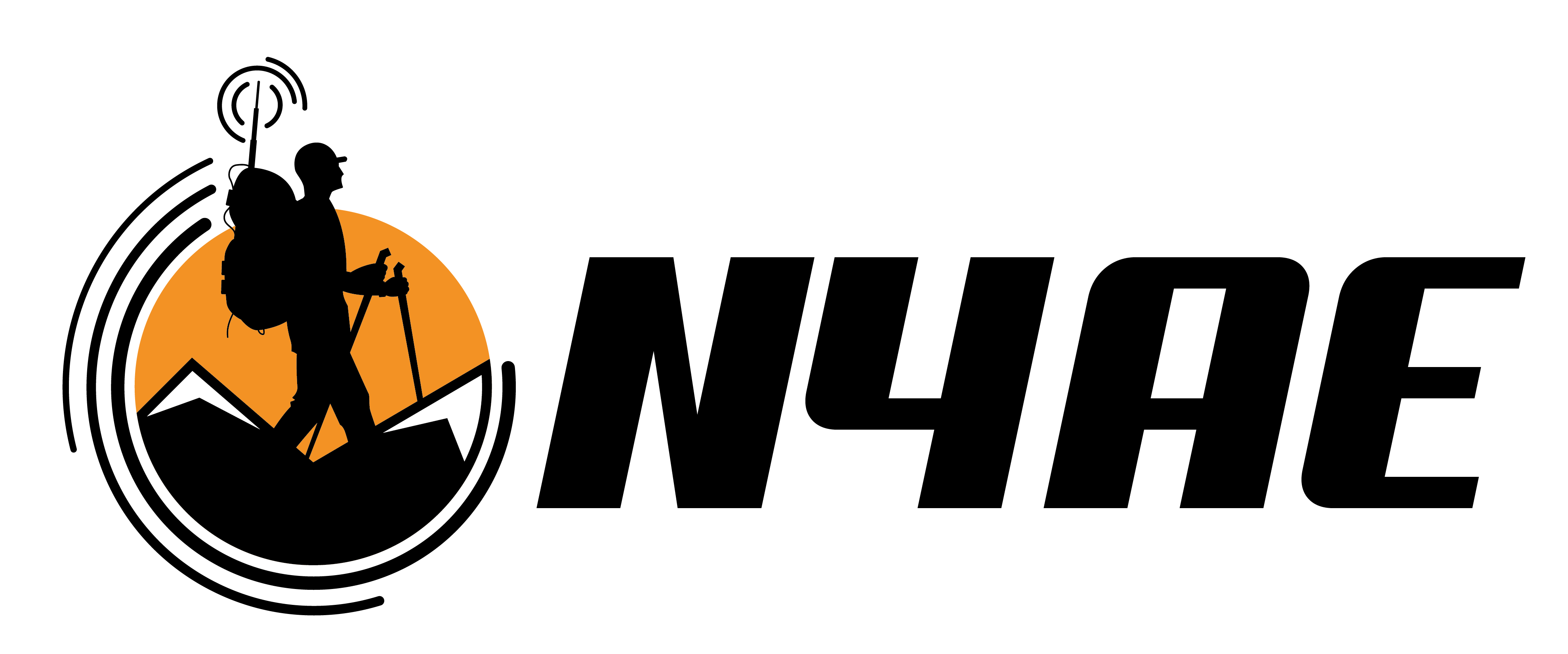Selecting Center Frequencies for an NVIS Antenna
This article is the fourth in a series on Portable NVIS Communication. This series focuses on short-haul communication during a disaster.
A Brief Review of NVIS Antennas
Near Vertical Incident Skywave, or NVIS, is a technique for communicating distances between 30 and 400 miles. The technique uses an antenna to radiate energy near-vertically into the ionosphere. Radio energy then bounces back down. As a result, you can receive the signal in a circular region up to 400 miles from the transmitter.
Humanitarian Relief Organizations, military, and Amateurs use NVIS for a variety of reasons. Regardless of the operational reason, there is almost always two engineering factors present.
- The distance between two stations to too great to communicate on VHF or UHF frequencies.
- The two stations are in each other’s skip zone, making normal skywave communication impractical.
NVIS makes communication between these distances almost 100% reliable throughout the day.
The AS-2259/GS Antenna
The most common NVIS antenna design is the AS-2259/GS. The U.S. military used this antenna during the Vietnam War.
The antenna consists of two V-shaped dipole wires supported by a 15-foot mast. The military designed the AS-2259/GS to be light weight and set up by a single soldier. They traded electrical performance for weight. As a result, this antenna is ineffective beyond 500 miles.
By its design, the antenna resonated on two frequencies between 2 MHz and 8 MHz. For amateur radio use, operation takes place on the 80 Meter, 60 Meter, and 40 Meter bands.
Resonate Frequency: The Most Important Decision
The purpose of this antenna is to provide reliable communication within the skip zone. With two bands available, what are the most likely operating frequencies?
This is the most important decision you can make when building an NVIS Antenna.
- Will I use the antenna in humanitarian relief or civil defense?
- What traffic nets am I likely to use?
- What communication modes am I most likely to use?
You are making a huge mistake by cutting the antenna to frequencies other hams have published on the web without thinking about these questions first.
The Humanitarian Relief Version (ARES)
Humanitarian Relief covers a lot of ground. I am referring to groups that respond after a hurricane, tornado, flood or earthquake. If you expect to take part in such a role, then the frequencies of your state ARES net are a good place to start.
You also might consider the ITU Region 2 Emergency Centers of Activity. These are frequencies set aside for ad-hoc disaster operations.
- 3985 kHz
- 7240 kHz
The Civil Defense Version (RACES)
Once upon a time, the FCC set aside frequencies for use in civil defense. If the President declared a national emergency, only amateurs registered with their local civil defense could remain on the air.
Even though RACES frequencies in Part 97 disappear long ago; law enforcement, the military, and other Federal users still plan for communications with the amateur service.
Here are the old RACES subbands you might consider for your antenna.
- 3500 kHz to 3550 kHz (Morse Code)
- 3930 kHz to 3980 kHz (Phone)
- 3984 kHz to 4000 kHz (Phone)
- 7079 kHz to 7125 kHz (Digital)
- 7245 kHz to 7255 kHz (Phone)
In a War Powers situation, the Army will communicate with amateurs on 3997 kHz (See Army Electromagnetic Spectrum Operations (FM 6-02.70), Appendix E). That fact makes the 3984 kHz to 4000 kHz subband a good candidate on 80 meters.
The 7079 kHz to 7125 kHz subband on 40 Meters is ideal for digital communication. By choosing those two, you have a tuned antenna for multi-mode use.
Thoughts on the 60 Meter Band
The Amateur 60 Meter Band also is a possibility for the Civil Defense Version of the antenna. The FCC expects amateurs to communicate with Federal stations during an emergency.
Perhaps 60 Meters is a logical substitute for 40 Meters. In this case, you could make the antenna resonate at both 3992 and 5357 kHz. These are the center frequencies of these subbands.
My NVIS Antenna
If I can have only two bands, I would select 80 Meters and 60 Meters. These two bands have characteristics most favorable for the NVIS technique.
But I plan to cheat.
I will build my NVIS antenna in such a way that I can swap wire elements depending on the situation. I want maximum flexibility in the field, so I plan to have four bands available to me.
Here are the center frequencies of each antenna element.
- 3975 kHz for voice communication
- 5348 kHz for voice or digital communication
- 7100 kHz for digital communication
- 7275 kHz for voice communication
Assuming a 50 kHz bandwidth at the center frequency, I won’t need a transmatch (tuner) to cover important parts of the dial.
- 3950 to 4000 kHz covers a lot of 75 Meter Phone Nets, including the NTS Net at 3985 kHz and Army at 3997 kHz
- 5323 to 5373 kHz covers the first four channel assignments on 60 Meters
- 7075 to 7125 kHz covers the popular RTTY and Data subband on 40 Meters
- 7250 to 7300 kHz covers the Region 2 Emergency Frequency at 7275 kHz and the AM Watering Hole at 7290 kHz




















looking forward to seeing your prtotype!